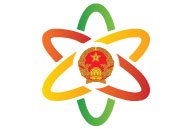
News
A commodity still can be classified into different codes
Summary
Updated on : 27-07-2017

VCN - According to the assessment of the provincial and municipal Customs Departments on rules for the imposition of tariff schedules and duty rates in Article 10 of the Law on Import and Export Duties 2016 has created transparency, facilitated taxpayer and promoted administrative reform, simplified the tariff schedule and reduced tax rate. However, currently, some commodities can be classified into different codes with different tax rates, leading to different management policies.

General assessment of the provincial and municipal Customs Departments on the rules for imposition of tariff schedules and duty rates in the Law on Export and Import Duties 2016 has contributed to developing and protecting reasonably domestic production, promoting administrative reform, simplifying tariff schedules, reducing duty rates to ensure simplicity, facilitate administrative procedure reform, comply with economic development policies and focus on development of high technologies and source technologies, save energy and protect environment.
The rules for the imposition of tariff schedules and duty rates comply with integration commitments and socioeconomic development orientations of the State, contribute promoting administrative reform, orienting and stabilizing the market, increasing State revenues on the basis of simplicity and transparency, facilitating taxpayers and implementing tax administrative reforms. Especially, in Clause 5, Article 10 of the Law on Export and Import Duties stipulates that the uniform imposition of duty rates for goods of same uses or technical features, import duties are regressive from finished products to raw materials, export duties are progressive from finished products to raw materials, which contribute to developing and promoting production, localization and environmental protection in accordance with the economic development policies of the Party and the State.
However, according to representatives of Da Nang Customs Department, in the Export and Import Tariff Schedules, some commodities with preferential import duty rates are inconsistent with the rules for imposition of tariff schedules and duty rates in Article 10 of the Law on Export and Import Duties 2016 such as the medical gauze imported from Danameco Medical Joint Stock Corporation, Memco Material Medical and Equipment Joint Stock Company, import duty rate of raw materials is higher than the finished products .
According to representative of Quang Ninh Customs Department, regarding the rules for the uniform imposition of duty rates for goods of same nature, composition, uses or technical features, Import duties are regressive from finished products to raw materials and export duties are progressive from finished products to raw materials, which facilitate and specify for Customs agencies and enterprises in applying code of goods. However, in the Export and Import tariff schedule, some commodities are still classified into different codes with different duty rates, leading to different management policies.
The representative of Quang Ninh Customs Department gave the example: Corn is classified for popcorn with HS code 10059010, preferential import duty of 30%, meanwhile "other” type with HS code 10059090, preferential import duty rate only of 5%; Plasters used in dentistry, with HS code of 25202010, preferential import duty rate of 0%, while the "other" type of HS code of 25202090 preferential import duty rate of 3%.
In addition, the Beam lamp units in chapter 85 and 94 of the Export and Import Tariff Schedule, in chapter 85, the Sealed beam lamp units used for motor vehicles with HS code 85391010, preferential import duty rate of 20%. Meanwhile, “other” type with HS code 85391090 with preferential import duty rate only of 0%. In chapter 94, the Searchlights are classified with HS code 94054020 with a preferential import duty rate of 25%.
According to Quang Ninh Customs Department, the difference of Import duty rates will lead to the situation that enterprises can declare false purpose to enjoy low duty rates, causing difficulties for Customs agencies to inspect, supervise and classify for goods.
Giving one of the inadequate regulations for commodity subject to or not subject to plant quarantine, the representative of Quang Ninh Customs Department said, the Smoking tobacco, whether or not containing tobacco substitutes in any proportion and Water pipe tobacco specified in Subheading Note 1 to this Chapter with HS code 24031100 is not subject to plant quarantine under Decision 2515/QD-BNN-BVTV dated June 29th, 2015. However, the other manufactured tobacco for the manufacture of cigarettes with HS code 24031920 is subject to plant quarantine under Decision.
The representative said that for this commodity, enterprises can declare false purpose to classify them into code not subject to plant quarantine, causing difficulties for Customs agencies to classify goods and inspect commodity policies.
In the process of applying the current Export and Import tariff schedules, as reflected by local Customs units, commodities are very easy to misunderstand in the classification, because the criteria to classify code and duty rate is based on use purpose of goods, so it is difficult to determine code when enterprises import goods. Hence, these commodities need to be applied the similar duty rate level.
Giving some obstacles in the Department, the representative of Hai Phong Customs Department said that, the imported furniture is imposed different duty rates but classified in accordance with use purpose: metal furniture used for office HS code 9403.10.00, import duty rate of 20%; other HS code 9403.20.90, import duty rate of 10%; wooden furniture used for office, HS code 9403.30.00, import duty rate of 20%. The determination of proportion, weight, and value to verify the main material is very difficult to Customs agencies and enterprises. Therefore, these commodities need to be applied the similar duty rate level.
Regarding this content, the representative of Binh Duong Customs Department analyzed that currently, in the tariff schedule, the chips and sticks with HS code 2005.20.91 are subject to a duty rate of 18% and potato slices with HS code 2005.20.11 are subject to a duty rate of 20%. However, enterprises regularly declare as the chips and sticks but in fact, potato slices cake is made from potatoes with higher duty rate. Hence, these commodities need to be applied the similar duty rate level.
HCMC Customs proposed to amend the duty rate for Nonwovens, whether or not impregnated, coated, covered or laminated of heading 56.03, the current tariff schedule classify them into two subheadings according to material of fabric but the duty rates of two sub-heading is very different (0% with C/O form E for fabrics of man-made filaments and 20% for others) so enterprises take advantage of this to declare fabric into the subheading with lower duty rate to evade duty.
By Thu Trang/Ngoc Loan
Most Recent News
| Title | Category | Created On |
|---|---|---|
| VIDEO: Ngành Hải quan thực hiện 3 nhiệm vụ quan trọng hàng đầu chuyển đổi số | News | 2024-10-01 06:06:55 |
| Vốn đầu tư trực tiếp nước ngoài giải ngân cao nhất trong 5 năm qua | News | 2024-07-16 16:06:43 |
| Thị trường Bắc Âu bổ sung 9 quy định đối với hạt điều nhập khẩu | News | 2024-06-28 14:37:14 |
| Singapore tăng thuế dịch vụ hàng hóa (GST) từ 8% lên 9% | News | 2024-05-10 16:09:44 |
| Hoa Kỳ khởi xướng điều tra chống bán phá giá đĩa giấy nhập khẩu từ Việt Nam | News | 2024-05-10 16:02:56 |
Search All News
|
A Quick Intro |
Search Trade Information
|
|
|
|
|
|
|
|
|
|
|
|
|
|
Feature Information
|
|
|
|
|
|
|
|
|
|
|
Information & Articles
|
|
|
|
|
|
|
|
|
|
|
|
Contact Us! If you cannot find what you require in this website please feel free to contact us. Click here to send us a message >>>
|